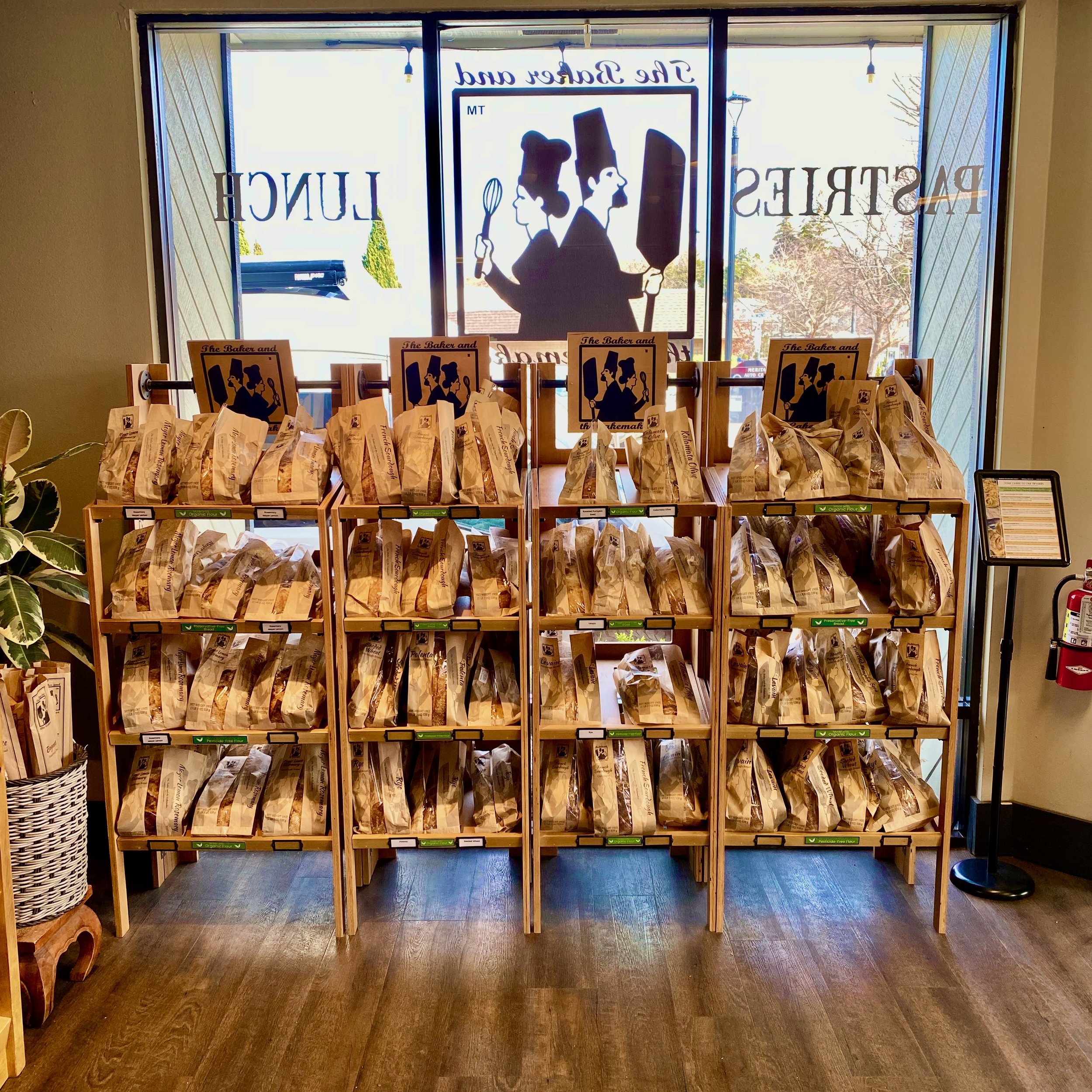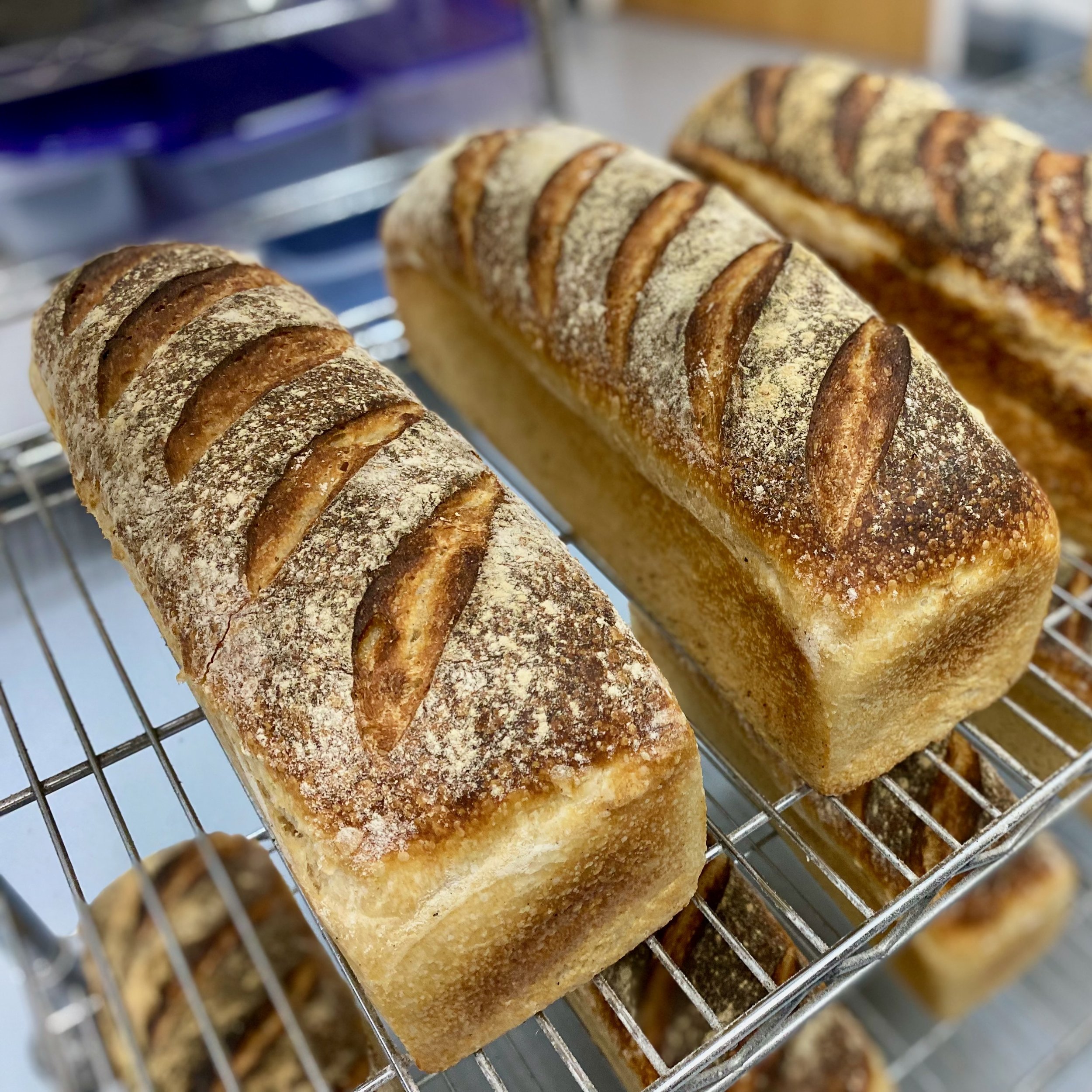The Nasty Nine: Ingredients to Avoid in Commercial Bread
Bread is nostalgic. Comforting. Delicious. But the truth is, not all bread lives up to that promise — especially the kind you’ll find lining most grocery store shelves.
At The Baker and the Cakemaker, we do things differently. We bake our bread with care, using just a few simple, wholesome ingredients.
No shortcuts. No preservatives. No mystery additives. Just real bread, made the way it should be.
Here’s a look at 3 of our best-selling loaves — and the ingredients that make them special.
All simple. All recognizable. Nothing hidden.
Traditional French Sourdough (Campagne): Organic unbleached wheat flour, water, sourdough starter, sea salt
Meyer Lemon Rosemary: Organic unbleached wheat flour, water, sourdough starter, olive oil, sea salt, rosemary, meyer lemon zest
Kalamata Olive: Organic unbleached wheat flour, water, sourdough starter, kalamata olives, sea salt
The ingredients in commercial bread found in the grocery stores are a different story….
We’re here to help you understand what’s really in your food.
Today, we’re spotlighting “The Nasty Nine” — the worst ingredients hiding in many commercial breads, and why you might want to think twice before bringing them home.
But…before we even get to the Nasty Nine, we need to discuss…
Glyphosate
One of the most overlooked ingredients in everyday food — especially bread — is the flour itself. Most conventional flours come from wheat that’s been sprayed with glyphosate, the active ingredient in many herbicides like Roundup. While glyphosate is used to kill weeds, it’s also often applied just before harvest as a drying agent — a process known as “desiccation.” That means traces of this chemical frequently end up in the wheat, and ultimately, in the flour used for commercial baking.
Why does this matter?
Glyphosate has been linked to a range of health issues, including hormone disruption, gut microbiome imbalance, and potentially even cancer. Beyond human health, glyphosate use contributes to soil degradation, harms pollinators, and pollutes waterways. At The Baker and the Cakemaker, we choose to use only organic, glyphosate-free flour in all our breads and pastries — because what’s left out matters just as much as what’s put in.
Now, let’s discuss the Nasty Nine ingredients that you should also be aware of:
High Fructose Corn Syrup (HFCS)
A cheap sweetener made from corn that spikes blood sugar and contributes to inflammation. It’s also been linked to obesity and fatty liver disease.
Azodicarbonamide (ADA)
A dough conditioner (and yes, also used in yoga mats). ADA is banned in Europe and Australia, and may pose respiratory and cancer risks when heated.
Monoglycerides & Diglycerides
These emulsifiers improve texture and shelf life, but often hide trans fats that don’t need to be listed on the label. Trans fats are strongly linked to heart disease and inflammation.
Calcium Propionate
Added to prevent mold, but may cause gut issues and has been linked to behavioral problems in children.
Potassium Bromate
Used to help bread rise, but classified as a possible carcinogen. It’s banned in many countries, but not the U.S.
Artificial Colors & Flavors
Common in flavored or multigrain breads. These additives may impact behavior, trigger allergies, and affect brain health.
Bleached Flour (Chlorine Dioxide, Benzoyl Peroxide)
Processed with chemicals that strip nutrients and may leave behind irritants. Not nourishing.
Excess Added Sugar
Some slices have as much sugar as a cookie. Can lead to cravings, energy crashes, and long-term health issues.
Soy Lecithin & Soy Flour
Often genetically modified and highly processed. Can affect hormone balance and gut health, especially in sensitive individuals.
What To Look For Instead
When shopping for bread, look for short, simple ingredient lists - ingredients you recognize and can pronounce.
A great bread contains:
• Organic, unenriched, unbleached flour
• No refined sugar or artificial sweeteners
• No preservatives, dough conditioners, or emulsifiers
Final Thoughts
Not all bread is bad. But a lot of commercial breads are built to last on shelves — not in your body.
Start reading labels. Ask questions. And choose bread that loves you back.
Cheers to healthy eating!
-From the Team and the Baker and the Cakemaker





